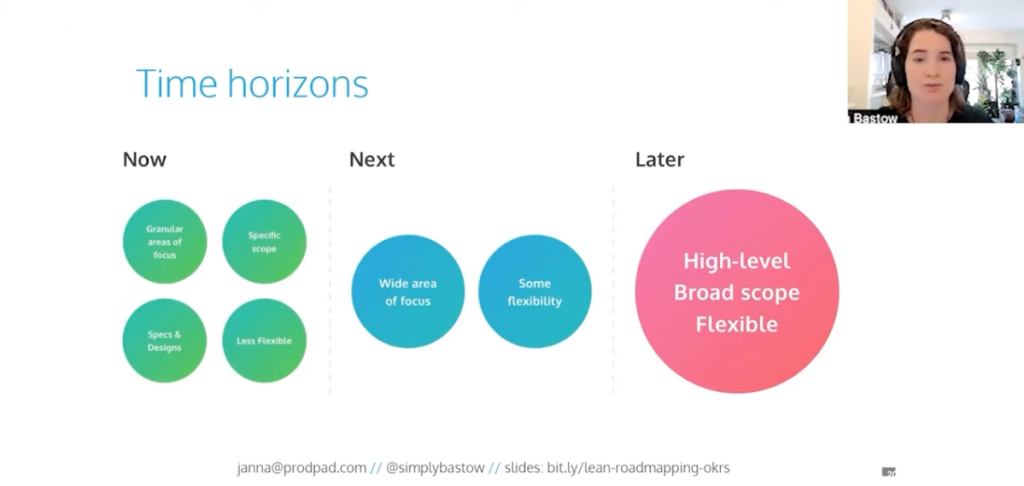The value is in roadmapping not in the roadmap itself
When you use roadmaps, you are making a number of assumptions:
- You assume you know how much work there is and how long each feature is going to take.
- You assume that nothing else is going to disrupt your timeline.
- You assume that each feature will work as soon as it is launched.
- You assume that each of these features actually deserves to exist!
What could possibly go wrong?
- Made up release dates
- Development due dates marches
- Mismanaged expectations
- Missed market opportunities
- Building the wrong thing
- Sad product managers
Vicious cycle: big buffers, slow work -> tighter controls, less freedom -> quality suffers, problems go unsolved -> blame culture -> repeat…
Your roadmap is a tool to help you learn and iterate at the product strategy level. In other words: Your roadmap is a prototype for your strategy.
Keep your roadmap simple!
My First Roadmap: Problem 1 -> Problem 2 -> Problem 3
Metaphor: Product is uncharted territory. Survey your surroundings, and what is at your disposal. Take one step at the time and map your journey on observations. Now -> Next -> Later.

Now: granular about your focus and scope. Stuff right in front of you
Later: less about spicific initiatives, outlining problems you think might need to be sovled to reach your vision.
The company sets top-level objectives (north star), and teams work together to decide how they can work towards this goal. Metaphor: get to Mordor: you can have my axe, bow, sword.
Objectives might be set on different levels. Some companies have more than one product, department, etc. E.g. Generic objectives, Pirate (ARRRR) objectives, etc.
Vision is essential too: FOR target customer, WHO statement of need or opportunity THE product name THAT key benefit, reason to buy UNLIKE primary competitive alternative OUR PRODUCT statement or primary differentiation.
Vision + Objectives + Time Horizons = Lean Roadmap
Objectives (what you need to achieve: improve overall health to avoid illness or injury) -> Initiatives (actions we need to take to get there: introduce regular exercise to schedule; refactor diet) -> Key results (what good looks like: lose 15 pounds by the end of the year; be able to touch toes without bending knees)
There are lots of paths forward, leave room for interpretation and creativity!
It’s not your job to have all the answers, it’s your job to ask the best questions!
(e.g. set a meal as a goal, not a steak). And don’t forget to build in room for validation. (validate what you have delivered)
